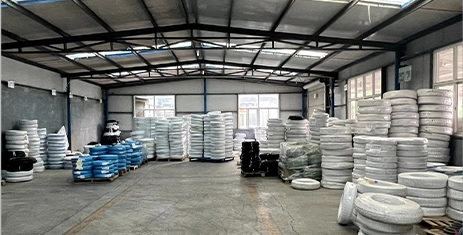AC Duct Pipe - Efficient Air Distribution Solutions
Understanding AC Duct Pipe An Essential Component for Efficient Air Conditioning Systems
Air conditioning systems are vital for maintaining comfortable indoor environments, especially in regions with extreme temperatures. One of the key components that ensures optimal performance of these systems is the AC duct pipe. This article will explore the significance, types, and benefits of AC duct pipes.
What is an AC Duct Pipe?
An AC duct pipe is a conduit through which conditioned air is distributed throughout a building. These pipes are typically made of various materials, including metal, fiberglass, or flexible plastic. The primary function of duct pipes is to transport cool or heated air from the air conditioning unit to different rooms, maintaining a consistent temperature and air quality inside.
Types of AC Duct Pipes
1. Metal Ducts Often made of galvanized steel or aluminum, metal ducts are highly durable and resistant to leaks. They are commonly used in commercial buildings due to their strength and longevity. Metal ducts can also be insulated to prevent energy loss.
2. Flexible Ducts These are made from a combination of plastic and metal wire, allowing them to bend and fit into tight spaces easily. Flexible ducts are often used in residential settings where installation flexibility is necessary. However, care must be taken to avoid sharp bends that can restrict airflow.
3. Fiberglass Ducts These ducts are typically insulated and are ideal for minimizing energy loss. They are used in both commercial and residential systems, but fiberglass can sometimes pose issues with moisture absorption and may require adequate sealing.
ac duct pipe

Benefits of AC Duct Pipes
1. Improved Air Distribution A well-designed duct system ensures that air is evenly distributed throughout the space. This prevents hot or cold spots, enhancing overall comfort.
2. Energy Efficiency Properly insulated ducts help minimize energy loss, leading to lower utility bills. By utilizing the right materials, homeowners and businesses can reduce their carbon footprint.
3. Enhanced Indoor Air Quality AC duct pipes can be fitted with filters that capture dust, allergens, and pollutants, improving indoor air quality. Regular maintenance, including cleaning and sealing, keeps ducts efficient and air quality high.
4. Noise Reduction Quality ducts, especially those made from insulated materials, can reduce the noise associated with air movement, contributing to a quieter indoor environment.
Conclusion
In conclusion, AC duct pipes are a critical element of air conditioning systems, significantly impacting performance, energy efficiency, and indoor comfort. Whether you are considering installing a new air conditioning system or upgrading an existing one, understanding the importance of duct pipes will help ensure that your space remains comfortable and energy-efficient. Investing in the right type of duct pipe and maintaining it properly can lead to long-term benefits and satisfaction for both residential and commercial users.
-
Ultimate Spiral Protection for Hoses & CablesNewsJun.26,2025
-
The Ultimate Quick-Connect Solutions for Every NeedNewsJun.26,2025
-
SAE J1401 Brake Hose: Reliable Choice for Safe BrakingNewsJun.26,2025
-
Reliable J2064 A/C Hoses for Real-World Cooling NeedsNewsJun.26,2025
-
Heavy-Duty Sewer Jetting Hoses Built to LastNewsJun.26,2025
-
Fix Power Steering Tube Leaks Fast – Durable & Affordable SolutionNewsJun.26,2025

